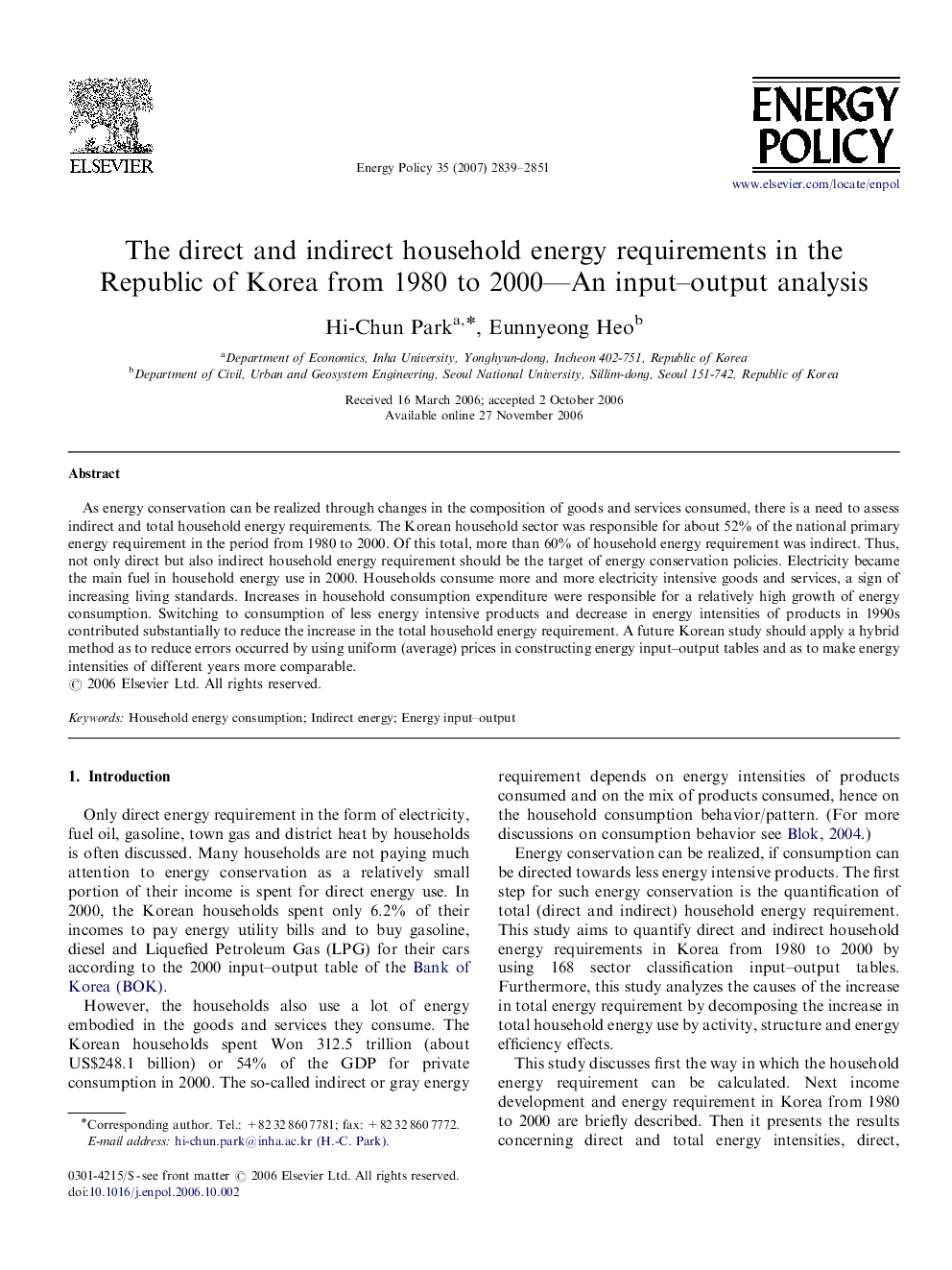| Article ID | Journal | Published Year | Pages | File Type |
|---|---|---|---|---|
| 994334 | Energy Policy | 2007 | 13 Pages |
As energy conservation can be realized through changes in the composition of goods and services consumed, there is a need to assess indirect and total household energy requirements. The Korean household sector was responsible for about 52% of the national primary energy requirement in the period from 1980 to 2000. Of this total, more than 60% of household energy requirement was indirect. Thus, not only direct but also indirect household energy requirement should be the target of energy conservation policies. Electricity became the main fuel in household energy use in 2000. Households consume more and more electricity intensive goods and services, a sign of increasing living standards. Increases in household consumption expenditure were responsible for a relatively high growth of energy consumption. Switching to consumption of less energy intensive products and decrease in energy intensities of products in 1990s contributed substantially to reduce the increase in the total household energy requirement. A future Korean study should apply a hybrid method as to reduce errors occurred by using uniform (average) prices in constructing energy input–output tables and as to make energy intensities of different years more comparable.
